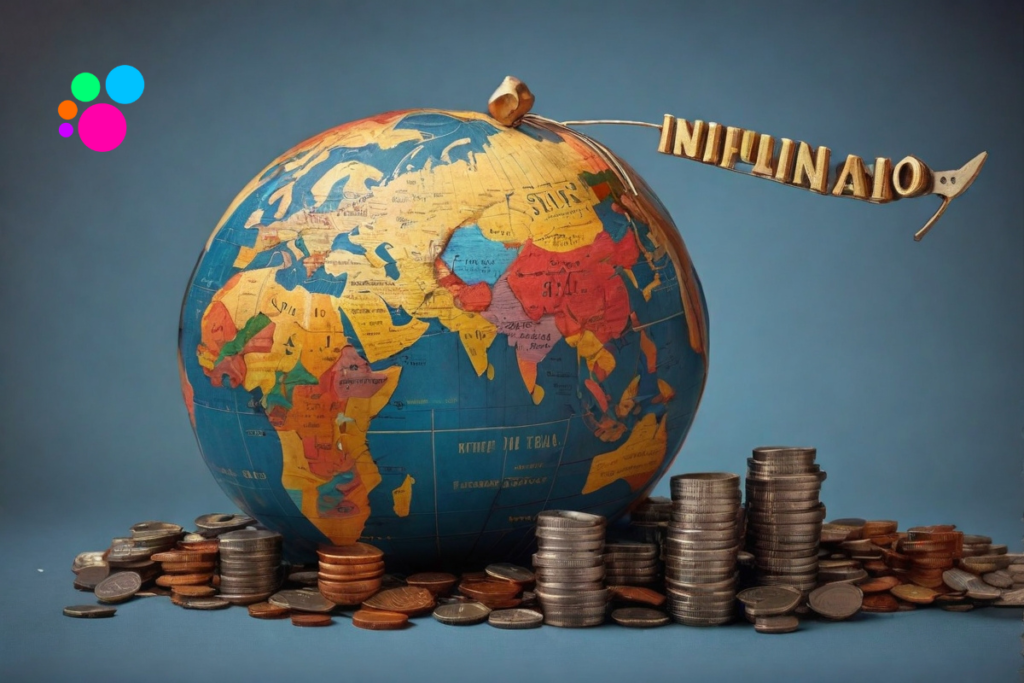Global Trends in Inflation: What the Numbers Reveal
Global Inflation Trends
Inflation is a critical economic indicator that measures the rate at which the general level of prices for goods and services is rising, thereby eroding purchasing power. Understanding global inflation trends is essential for policymakers, businesses, investors, and consumers alike, as it affects economic stability, investment decisions, and living standards.
As of late, global inflation trends have been a topic of significant concern and scrutiny. Various factors, including supply chain disruptions, changing consumer behaviors, government policies, and geopolitical tensions, have contributed to fluctuations in inflation rates worldwide. In this article, we will explore the current state of global inflation, key drivers behind inflation trends, and potential implications for different stakeholders.

Current State of Global Inflation
In recent years, inflation has been on the rise across many parts of the world. While central banks typically target a modest inflation rate to support economic growth and stability, excessively high inflation can lead to economic distortions and social unrest. Conversely, persistently low inflation or deflation can hinder economic activity and exacerbate debt burdens.
The COVID-19 pandemic has had a profound impact on global inflation dynamics. In the initial stages of the crisis, widespread lockdowns and supply chain disruptions caused a sharp decline in demand for goods and services, leading to deflationary pressures in some sectors. However, as economies reopened and stimulus measures were implemented, pent-up demand, coupled with supply constraints, fueled inflationary pressures.
Central banks in many countries responded to the pandemic-induced economic challenges by implementing accommodative monetary policies, such as lowering interest rates and engaging in quantitative easing. While these measures helped support economic recovery, they also raised concerns about their potential inflationary consequences over the medium to long term.
Key Drivers of Inflation Trends
Several factors have contributed to the recent uptick in global inflation. One of the primary drivers has been supply chain disruptions caused by the pandemic, such as shortages of raw materials, transportation bottlenecks, and labor shortages. These disruptions have led to increased production costs for businesses, which they may pass on to consumers in the form of higher prices.
Changing consumer behaviors have also played a role in inflation trends. During the pandemic, there was a shift in spending patterns, with increased demand for certain goods and services, such as home improvement products, electronics, and online retail. This surge in demand, combined with supply constraints, contributed to price increases in these sectors.
Government policies and fiscal stimulus measures have further influenced inflation dynamics. In response to the economic downturn, many governments implemented large-scale spending programs to support households and businesses. While these measures helped stimulate demand and mitigate the impact of the crisis, they also injected additional liquidity into the economy, potentially fueling inflationary pressures.
Geopolitical tensions and disruptions in global trade have also impacted inflation trends. Trade disputes, sanctions, and geopolitical conflicts can disrupt supply chains, leading to higher costs for imported goods and services. Additionally, fluctuations in commodity prices, such as oil and food, can affect inflation rates, particularly in countries that are heavily reliant on imports.
Implications for Stakeholders
The current inflationary environment has implications for various stakeholders, including policymakers, businesses, investors, and consumers. Central banks face the challenge of balancing the need to support economic growth with the risk of inflation overshooting their targets. They must carefully monitor inflation trends and adjust monetary policy accordingly to maintain price stability.
Businesses need to navigate the complex inflationary landscape, managing cost pressures while remaining competitive in the marketplace. This may involve implementing pricing strategies, optimizing supply chains, and exploring alternative sourcing options to mitigate the impact of inflation on their bottom line.

Investors must consider the potential effects of inflation on asset prices and portfolio returns. Inflation erodes the real value of fixed-income investments such as bonds and savings accounts, making assets with inflation-hedging properties, such as equities, real estate, and commodities, more attractive. However, investors should also be mindful of the risks associated with inflation, such as higher interest rates and increased volatility.
Consumers are directly affected by changes in inflation, as they experience changes in the cost of living and purchasing power. Rising inflation can reduce the affordability of goods and services, particularly for essential items such as food, housing, and healthcare. It can also impact household budgets and savings, potentially leading to adjustments in spending patterns and financial planning.
Global inflation trends are influenced by a complex interplay of factors, including supply and demand dynamics, government policies, and external shocks. The COVID-19 pandemic has heightened uncertainty and volatility in the inflationary environment, posing challenges for policymakers and stakeholders worldwide.
As economies continue to recover from the pandemic and adapt to evolving circumstances, monitoring inflation trends will remain crucial for assessing economic conditions and making informed decisions. Whether inflationary pressures persist or subside in the coming months will depend on a range of factors, including the trajectory of the pandemic, policy responses, and global economic developments.
In this dynamic environment, staying informed about global inflation trends and their implications is essential for navigating uncertainty and managing risk effectively. By understanding the drivers of inflation and their impacts on different stakeholders, policymakers, businesses, investors, and consumers can better position themselves to respond to changing economic conditions and mitigate potential adverse effects.






